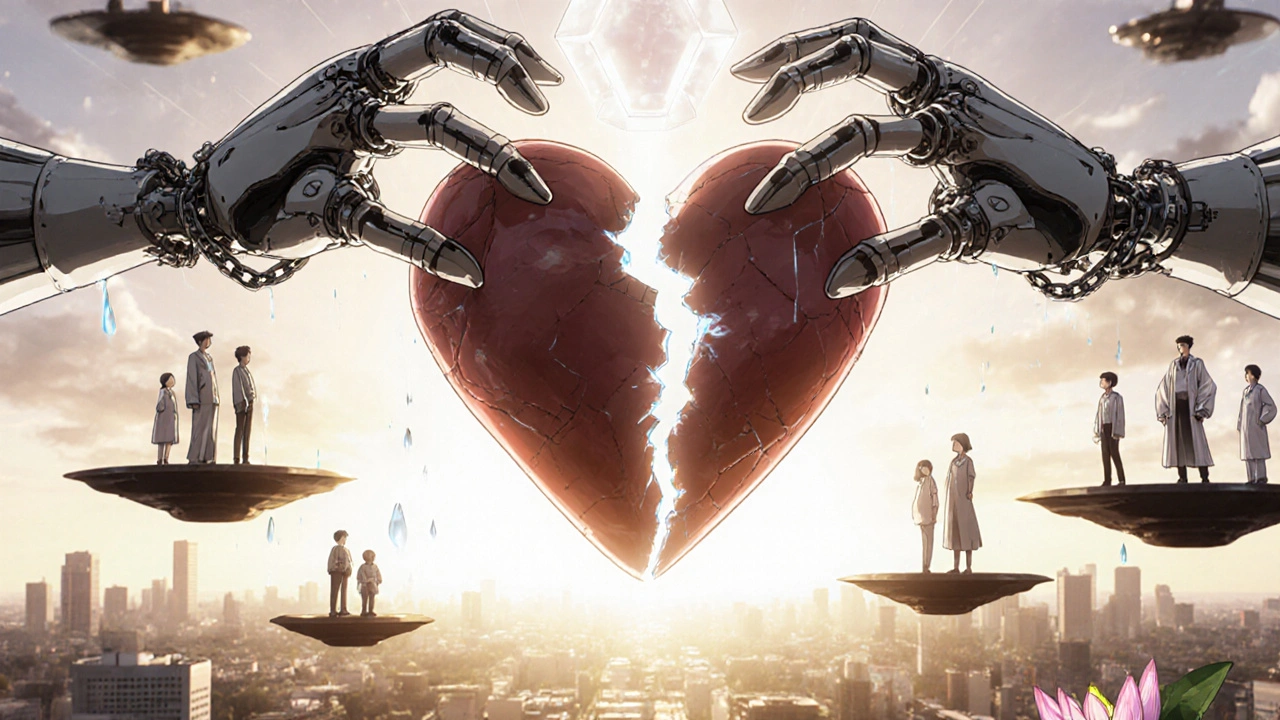For decades, leukemia and lymphoma were treated with the same brutal approach: chemotherapy that killed fast-growing cells-cancerous or not. Patients lost hair, got sick from nausea, and often didn’t survive long-term. But since 2001, when imatinib became the first targeted drug approved for chronic myeloid leukemia, everything changed. Today, we’re not just slowing cancer-we’re reprogramming the immune system to hunt it down. And for many patients, that means not just more time, but a real chance at remission-or even cure.
What Targeted Therapies Actually Do
Targeted therapies don’t blast through the body like chemo. They’re like precision missiles. They lock onto specific proteins or signals that cancer cells rely on to grow and survive. In leukemia and lymphoma, these are often found in B-cells-the white blood cells that go rogue. Take BTK inhibitors like ibrutinib and acalabrutinib. These drugs block a protein called Bruton’s tyrosine kinase, which is stuck in the "on" position in many B-cell cancers. By turning it off, the cancer cells can’t send survival signals. Patients take them as a daily pill. No hospital stays. No IV lines. Many people live with the disease for years, managing it like high blood pressure. Then there’s venetoclax, a BCL-2 inhibitor. Cancer cells use BCL-2 to avoid dying naturally. Venetoclax flips that switch. It forces the cancer cells to self-destruct. Used in combination with antibodies like obinutuzumab, it’s become a standard for chronic lymphocytic leukemia (CLL). Unlike chemo, which often requires months of treatment, venetoclax combinations are usually given for a fixed 12-24 months. After that, many patients stay in remission without further drugs. The biggest win? Fewer side effects. Patients on targeted therapy report less fatigue, fewer infections, and better quality of life. A 2025 study from the CLL Society showed that patients treated with targeted drugs took nearly twice as long to develop Richter transformation-a dangerous leap into aggressive lymphoma-compared to those on older chemo regimens.Cellular Therapy: Rewiring Your Immune System
If targeted therapy is a sniper, CAR T-cell therapy is a living army. It takes your own T-cells, genetically engineers them to recognize cancer, and sends them back to fight. Here’s how it works: First, doctors collect your blood through a process called leukapheresis. Then, in a lab, they add a synthetic receptor-called a chimeric antigen receptor (CAR)-to your T-cells. This CAR is designed to latch onto CD19, a protein found on most B-cell lymphomas and leukemias. The modified cells are grown in huge numbers, then infused back into you. The results? Stunning. In relapsed or refractory mantle cell lymphoma, a 2025 trial using LV20.19 CAR T-cells showed a 100% response rate and 88% complete remission. For patients who had tried everything else, that’s unprecedented. Three FDA-approved CAR T therapies are now standard: tisagenlecleucel (Kymriah), axicabtagene ciloleucel (Yescarta), and lisocabtagene maraleucel (Breyanzi). Yescarta, for example, is now approved as a second-line treatment for large B-cell lymphoma. Data from the ZUMA-7 trial showed 42.6% of patients were alive at four years-compared to just 22% with standard chemo. Newer versions are already here. Kite, a Gilead company, is testing dual-target CAR T-cells that go after both CD19 and CD20. This stops cancer from escaping by losing one target. Early results show 63.6% complete remission in patients who failed previous CAR T therapy.Why These Therapies Aren’t Perfect
No treatment is without trade-offs. Targeted drugs can stop working. Resistance builds over time. Patients on ibrutinib often see progression after 3-5 years. Mutations in genes like TP53 or del(17p) make resistance more likely. Some patients end up needing multiple drugs in sequence-each one less effective than the last. CAR T-cell therapy has its own dangers. About 20-40% of patients develop cytokine release syndrome (CRS), a storm of immune chemicals that causes fever, low blood pressure, and breathing trouble. Neurotoxicity can lead to confusion, seizures, or speech loss. Both require ICU-level care. That’s why these therapies are only offered at certified centers with specialized teams. Manufacturing takes 3-5 weeks. For someone with fast-growing lymphoma, that wait can be life-threatening. And cost? A single CAR T treatment runs $373,000 to $475,000. Even with insurance, out-of-pocket costs can hit $15,000-$25,000 per month for targeted drugs. Many patients face financial toxicity-choosing between treatment and rent.
Who Benefits Most?
Not everyone is a candidate. But for certain groups, these therapies are game-changers. - CLL/SLL patients with high-risk genetics (like del(17p)): Targeted therapies like venetoclax + ibrutinib offer better outcomes than chemo. - Relapsed or refractory aggressive lymphomas: CAR T-cell therapy is now the gold standard after two prior treatments. - Younger patients with mantle cell lymphoma: CAR T is being studied as a first-line option, replacing stem cell transplants. - Patients who can’t tolerate chemo: Older adults or those with heart or kidney problems often do better on oral targeted drugs. The big question now isn’t just whether the treatment works-but who gets it, and when. Right now, only 15% of eligible patients receive CAR T-cell therapy. Why? Because only 89% of NCI-designated cancer centers offer it. Community hospitals can’t afford the infrastructure. That means rural patients, low-income patients, and older adults are often left behind.The Future: Earlier Use, Better Safety
The next five years will change everything. Researchers are testing CAR T-cell therapy as a first-line treatment for high-risk lymphomas. By 2030, 68% of hematologists expect it to replace stem cell transplants in some cases. Newer CAR designs aim to reduce toxicity. One trial is using a "safety switch"-a gene that lets doctors turn off the CAR T-cells if side effects get too severe. Dual-target therapies (CD19 + CD20) are already in phase 2 trials. Early data suggests they’re more durable and safer. Some experts believe these could eventually be given as outpatient infusions-no ICU needed. And the pipeline doesn’t stop there. Bi-specific antibodies, which grab both cancer cells and T-cells together, are showing promise. So are allogeneic (off-the-shelf) CAR T-cells made from donor cells. These could cut manufacturing time from weeks to days and lower costs.
What Patients Should Ask Their Doctor
If you or a loved one has leukemia or lymphoma, here are key questions to ask:- Do I have a genetic mutation that makes targeted therapy a better option?
- Is CAR T-cell therapy an option for me now, or should I wait until after other treatments fail?
- What are the risks of CRS or neurotoxicity, and how will they be managed?
- Is this treatment covered by my insurance? What’s my out-of-pocket cost?
- Are there clinical trials for newer therapies I might qualify for?
Final Thoughts: A New Era, But Not a Finish Line
We’re in the most exciting time in blood cancer treatment since the 1970s. For many, what was once a death sentence is now a chronic condition-or a curable disease. But access, cost, and long-term side effects remain huge hurdles. The goal isn’t just to kill cancer. It’s to let people live. And right now, with the right therapy, that’s possible.Are targeted therapies better than chemotherapy for leukemia and lymphoma?
Yes, for most patients with B-cell leukemias and lymphomas, targeted therapies are now preferred over traditional chemo. They’re more effective, cause fewer side effects like hair loss and severe infections, and often allow patients to avoid hospitalization. For example, in chronic lymphocytic leukemia (CLL), combinations like venetoclax + ibrutinib have doubled progression-free survival compared to older chemoimmunotherapy regimens. They’re also taken orally, so patients can stay at home during treatment.
How long does CAR T-cell therapy take from start to finish?
The entire process takes 4 to 6 weeks. First, your T-cells are collected through a blood draw, which takes 3-6 hours. Then they’re sent to a lab for genetic modification-a process that takes 3 to 5 weeks. Once the cells are ready, you receive a single infusion, usually after a few days of low-dose chemo to make room for the new cells. You’ll stay in the hospital for at least 1-2 weeks afterward to monitor for side effects like cytokine release syndrome. Recovery at home can take another 4-8 weeks.
Can CAR T-cell therapy cure lymphoma?
For some patients, yes. In relapsed or refractory large B-cell lymphoma, about 40% of patients treated with CAR T-cell therapy remain in remission at four years-many without needing any further treatment. In mantle cell lymphoma, complete response rates hit 88% in recent trials. While not all patients are cured, a significant number achieve durable remissions that function like a cure. This was unthinkable just 10 years ago.
Why is CAR T-cell therapy so expensive?
The cost comes from the complex, personalized manufacturing process. Each dose is made from a single patient’s cells, requiring specialized labs, trained technicians, and strict quality controls. The process takes weeks and can’t be scaled like a pill. Plus, the treatment requires hospitalization, ICU monitoring, and long-term follow-up. As of 2025, the average cost is $373,000-$475,000 per treatment. Some manufacturers offer payment plans, and nonprofit groups help with financial aid.
What are the most common side effects of CAR T-cell therapy?
The two main side effects are cytokine release syndrome (CRS) and immune effector cell-associated neurotoxicity syndrome (ICANS). CRS causes fever, low blood pressure, and trouble breathing-usually within the first week. ICANS can lead to confusion, trouble speaking, seizures, or loss of coordination. Both are serious but treatable if caught early. About 20-40% of patients experience neurotoxicity. Most recover fully with proper care. Other side effects include low blood counts, infections, and fatigue that can last months.
Can I get CAR T-cell therapy if I’m over 70?
Age alone doesn’t disqualify you. Many patients over 70 have successfully received CAR T-cell therapy, especially if they’re otherwise healthy. What matters more is your overall fitness, organ function, and how advanced your cancer is. Clinical trials now include patients up to age 80. However, older adults are more likely to experience severe side effects like CRS or infections. Treatment centers carefully assess each patient’s risk before approving therapy.
How do I find a center that offers CAR T-cell therapy?
Start by asking your oncologist. Most major cancer hospitals and NCI-designated centers offer CAR T-cell therapy. You can also check the website of the drug manufacturer-for example, Kite (Gilead) has a patient support page that lists certified centers. The American Society of Hematology also maintains a directory. Be aware: community hospitals rarely offer it. You may need to travel to a larger city. Some programs help with travel and lodging costs for patients.
As of 2025, over 150 new therapies for leukemia and lymphoma are in clinical trials. The goal isn’t just to treat cancer-it’s to make it a footnote in a patient’s life story.


Gerald Cheruiyot
November 21, 2025 AT 01:09Still, the cost gap is brutal. Someone in rural Nebraska shouldn’t have to move to Boston just to get a shot at life.
Michael Fessler
November 22, 2025 AT 19:13Jeremy Samuel
November 24, 2025 AT 06:35Destiny Annamaria
November 24, 2025 AT 23:59Ron and Gill Day
November 26, 2025 AT 14:11Alyssa Torres
November 27, 2025 AT 10:16Stop making it about money. Start making it about humanity.
Summer Joy
November 27, 2025 AT 19:19Also, why is everyone acting like this is new? We’ve had targeted therapy since 2001. We just didn’t have TikTok to hype it.
Aruna Urban Planner
November 28, 2025 AT 06:10Nicole Ziegler
November 29, 2025 AT 21:47Bharat Alasandi
December 1, 2025 AT 06:23